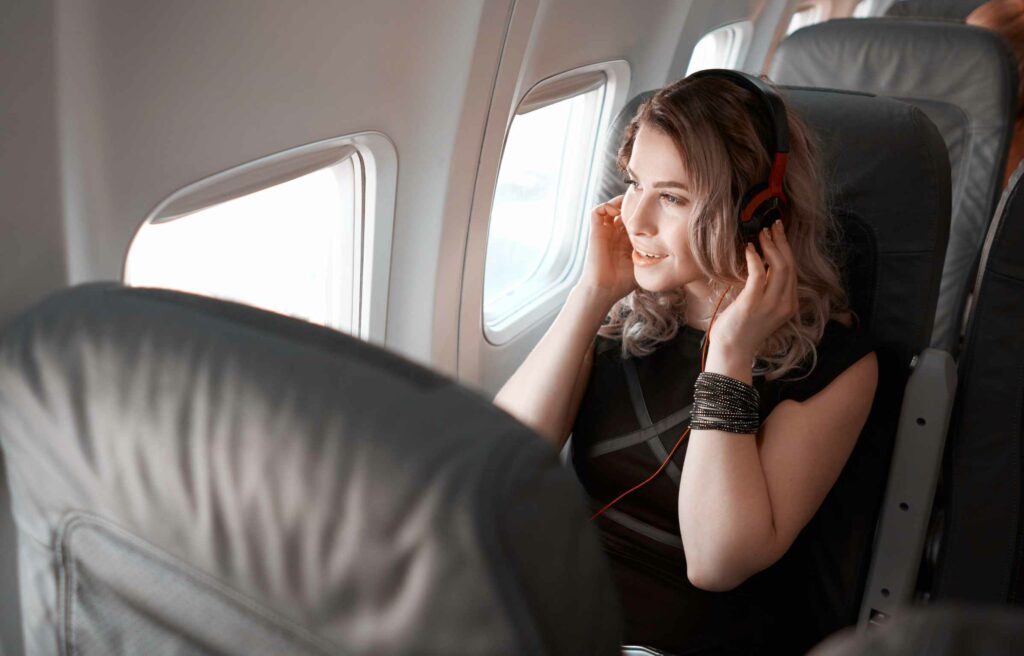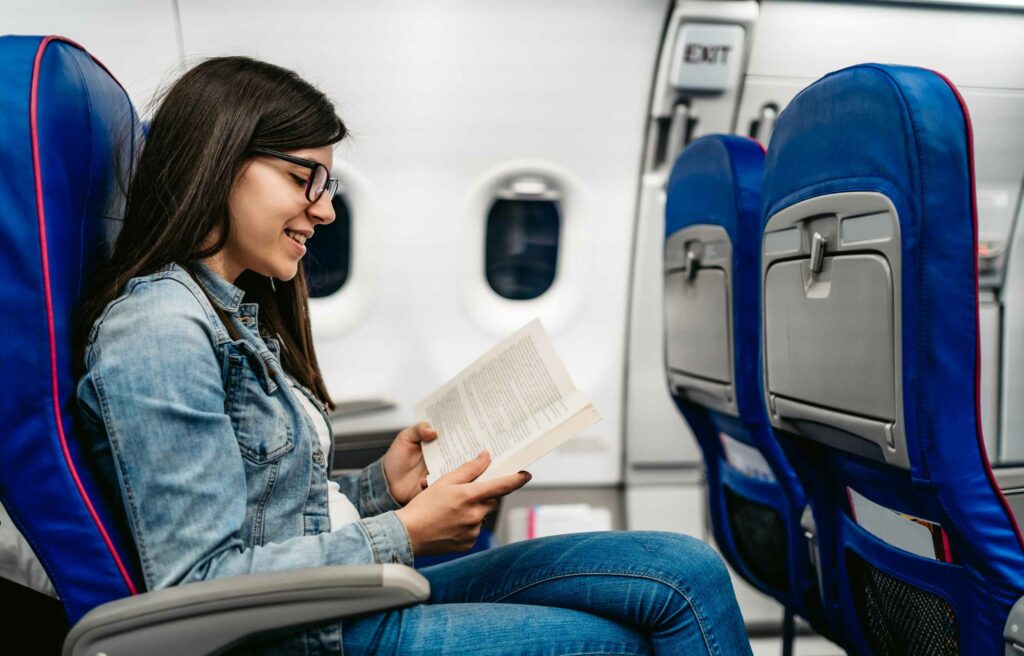Jet lag occurs when the body’s internal clock, or circadian rhythm, is out of sync with the time at your destination. It affects anyone crossing multiple time zones, throwing off sleep patterns, energy levels, and mood. Staying awake longer than usual is easier, but adjusting is still challenging for most travellers. With a few mindful steps on how to beat jet lag, you’ll arrive refreshed and ready to enjoy your trip.
Below are practical steps to help you stay fresh after those long flights.
1. Adjust Your Sleep Schedule Before You Leave
One of the best ways to prepare for a flight is to gradually shift your sleep schedule a few days before departure. Start going to bed and waking up an hour later each day, especially if travelling across several time zones. This slow adjustment can help ease your body into the new time zone and minimize the shock of a sudden change.
Gradually shifting your eating schedule and sleep can further align your internal clock. Planning your activities around the destination’s time zone can also mentally prepare you for the transition. Consistency is key, so stick to your adjusted schedule for the best results. By the time you depart, your body will already be in sync with your destination.
It will make the journey smoother and the adjustment faster.
?♀️ Also read – How to Get an Unlimited Flight Pass for All-Access Global Travel
2. Stay Hydrated During the Flight
The flight cabins are notorious for low humidity, making it very easy for dehydration to set in. Dehydration increases the symptoms of jet lag, such as headaches, dry skin, and weariness. Drink plenty of water before boarding the aircraft and keep hydrating throughout the flight.
Aim to drink at least one cup of water every hour you’re in the air, and avoid sugary or salty snacks, which can worsen dehydration.
Sugary Snacks like –
- Sugary granola bars
- Cookies and pastries
- Sweetened yogurt
Salty Snacks like –
- Chips and pretzels
- Salted nuts
- Crackers (especially those with added salt)
Bringing a refillable water bottle can make it easier to stay hydrated without relying on limited in-flight service.

3. Avoid Caffeine and Alcohol
Both caffeine and alcohol interfere with your body’s natural sleeping pattern, which, in return, makes it even more difficult for your body to adjust to the new time zone. While alcohol dehydrates your body, caffeine interferes with your sleep mechanism either on the plane or after reaching your destination.
Stick to water or herbal teas like chamomile or peppermint to relax and avoid stimulants that might disrupt sleep.
Here are some options that you can consider –
Herbal Teas –
- Chamomile – Known for its calming and sleep-inducing properties
- Peppermint – Helps with digestion and relaxation
- Lavender – Reduces stress and promotes restful sleep
- Lemon Balm – Eases anxiety and promotes relaxation
- Ginger Tea – Aids digestion and reduces nausea, making it ideal for flights
Water Options –
- Plain Water – Essential for hydration
- Coconut Water – Naturally rich in electrolytes to prevent dehydration
- Infused Water – Add slices of lemon, cucumber, or mint for a refreshing twist
You’ll support your body’s adjustment to the new time zone by choosing calming teas and hydrating water options. Small choices like these can significantly affect how refreshed you feel when you arrive.
4. Nap Wisely on the Plane
A short nap of 20-30 minutes can help you feel refreshed without interfering with your sleep at your destination. Avoid sleeping for extended periods if it’s daytime at your destination, as it can make adjusting harder. If you need a longer nap, try timing it to the night or early morning of your destination to stay closer to your target sleep schedule.
Use an eye mask and neck pillow to create a comfortable napping environment, blocking out light and reducing strain. Set an alarm if necessary to prevent oversleeping, helping you stay aligned with the destination’s schedule. Remember, strategic napping can help fight fatigue without throwing off your adjustment, allowing you to arrive more refreshed and ready to explore.

5. Expose Yourself to Natural Light at Your Destination
The best way is to reset your body with light exposure. If you arrive in the morning or early afternoon, spend as much time outside as possible. Even a brief walk or sitting in the natural light can get your body going in the right direction to adjust the schedule change. Use outdoor activities to maximize light exposure to reduce jet lag symptoms as quickly as possible.
Natural daylight, especially the benefits of sunlight, signals your body about the time zone and to the brain that it’s morning and you need to get up and stay alert. Sunlight helps release serotonin, keeps you in a good mood, and makes you energetic. Try ditching your sunglasses in the morning and soaking in more natural light to notch up your adjustment even further.
6. Eat Meals According to Local Time
Our bodies usually refer to meal times to regulate the internal clock and by that fact. Eating according to the destination’s local time can help you adjust quickly. If you arrive in the morning, eat your breakfast, even if that will be very early; if you arrive in the evening, have a light dinner.
It helps signal your body that you’re transitioning into the new schedule.
Consider planning your meals to match the local time as follows –
- Morning Arrival – Eat a balanced breakfast with protein, fiber, and healthy fats (e.g., eggs, oatmeal with fruit, or yogurt).
- Afternoon Arrival – Go for a light lunch with a mix of protein and veggies (e.g., a salad with grilled chicken or a vegetable wrap).
- Evening Arrival -To help prepare for rest, Choose a lighter dinner that’s easy to digest (e.g., vegetable soup or grilled fish with steamed vegetables).
These meal choices can support your body’s energy needs while helping it adjust smoothly to the new time zone.

7. Move Around During the Flight
Sitting for long periods can easily stiffen, swollen, and fatigue the body. On very long flights, the rare hour or two spent moving around the cabin, stretching lightly, or doing some in-seat exercises might help maintain high energy levels. These techniques can relax circulation, lessen muscle tension, and make you feel fresher upon arrival.
Consider ankle rotations, shoulder rolls, and seated leg lifts to help keep muscles relaxed. Gently stretch your arms and back to help avoid stiffness. Even the simplest movements can make a big difference and help you avoid that sluggish feeling when you reach your destination.
Moving around is essential for better circulation and to reduce the risk of deep vein thrombosis, which is one concern many people have with flying long distances.
8. Dress Comfortably
Layered clothing can make a long flight far more tolerable. Choose loose-fitting clothes and bring layers you can add or remove depending on the cabin temperature. Avoid tight clothing restricting movement or circulation, and get cozy socks and a light scarf or blanket for added comfort. Opt for breathable fabrics that won’t trap heat, helping to keep you comfortable throughout the flight.
Consider these fabric options –
- Cotton – Soft, breathable, and widely available, ideal for comfort.
- Linen – Lightweight and cool, perfect for long hours of wear.
- Bamboo – Naturally moisture-wicking and breathable, keeping you cool.
- Modal – Soft, smooth, and great for sensitive skin, with excellent breathability.
- Merino Wool – Regulates temperature well, keeping you warm or cool as needed.
- Tencel (Lyocell) – Silky-soft, durable, and has excellent moisture-wicking properties.
These fabrics can make a big difference in keeping you comfortable, especially on longer flights.
Loose clothing also reduces the risk of swelling, which can occur on long flights due to prolonged sitting. Consider a comfy pair of slip-on shoes, which are easy to take off and put back on during security checks and in-flight.
9. Use an Eye Mask and Earplugs or Noise-Canceling Headphones
Airplanes can be noisy, and bright lights make relaxing difficult. An eye mask and earplugs might help create a quieter, darker environment that is better for rest. Noise-cancelling headphones are also a good investment for frequent travellers because they block background noise and permit listening to calming music or white noise.
Consider using a contoured eye mask for better comfort and light blocking. You may also consider earplugs or noise-cancelling headphones that will help tune out any announcements or other passengers, thus giving you a restful environment. It will make a lot of difference, so you can be in their time zone when you finally land at your destination.

Recommended read – 12 Best Flight Tracking Apps for Real-Time Updates
10. Set Your Watch to Your Destination’s Time Zone
Making a mental adjustment to the local time of your destination can help reduce the effects of jet lag and ease your transition.
Before boarding the plane –
- Set your watch or phone to your destination’s time. This slight mental shift can help you adjust more quickly by psychologically preparing you for the new schedule.
- Set your watch and act like you’re already in the destination’s time zone.
- Eat, sleep, and move around accordingly.
Aligning your activities with the new time zone can help your body begin adjusting even while you’re in transit.
11. Limit Screen Time Before Sleeping
Most significantly, the blue light from screens will suppress melatonin production in phones, tablets, and laptops. If you’re going to sleep on the plane, it’s best to turn these off an hour before trying to sleep. Otherwise, you can read a book, listen to music, or try guided meditation as a relaxing option.
If you must use them, switch them onto a “night mode” setting, which reduces blue light exposure. Glasses that block out blue light can also be beneficial during screen time near rest. A screen-free space to sleep in, relaxed and calm, may also help you go to sleep and adapt to your time zone at your destination.

12. Make the Most of Layovers
Use the time to stretch your legs, walk around the terminal, and get light exposure if possible. Layovers are a perfect opportunity to reset, especially if you’re feeling stiff or tired. Some airports even have designated rest areas or walking paths that can help you recharge.
Enjoy amenities like massage chairs or relaxation zones to loosen up and reduce tension. If there’s a long layover, consider a quick shower if available to feel refreshed. Staying active and refreshed during layovers can make the final leg of your journey much more comfortable.
? Related – How to Book Flights with Extended Layovers and Enjoy Longer Stops
13. Practice Relaxation Techniques
Long flights and time zone changes can cause stress, making sleeping harder. Try some relaxation techniques, including breathing exercises, meditation, and guided relaxation apps. You could also use soft music or guided sleep meditation to put your body in a somnolent mood while flying.
Other suitable techniques include progressive muscle relaxation, including tensing and releasing each muscle group. It will allow you to let go of physical tension and relax. You can also do some visualization exercises that may quiet your mind and reduce anxiety. Little rituals like these make a big difference and help you fall asleep and feel fresh upon arrival.
14. Take a Hot Shower Upon Arrival
A hot shower will reset and relax you after a long flight, cool your tense muscles, and the temperature change will regulate your circadian rhythm. If you are coming in during the morning, a cooler shower may do you some good to wake you up, while an evening shower with warm water may be suitable. It will give your body some hint that it is time to sleep.
Afterwards, add a few minutes of stretching to the shower to help release tension from the body and improve circulation. Include a refreshing or calming scented body wash, like eucalyptus or lavender, to extend the soothing effects of the shower in renewing and recharging your senses.
Deep breathing while stretching will help you clear your mind and draw your attention to your midsection.
15. Avoid Heavy Exercise Right Before Bed
While exercise can be helpful to decrease stress and increase sleep, doing heavy or intense exercise within a few hours of bedtime may leave you too alert or aroused. Try to finish vigorous exercise a few hours before bedtime. If you need to unwind, try light stretches, yoga, or a quiet walk outside to help your body relax into sleep.
Light activities like deep breathing and stretching can help lower one’s heart rate to quiet the mind. By keeping high-energy activities away from sleep time, the body can take over with natural melatonin production, thus improving rest. One can add a few minutes of meditation or quiet reflection to improve sleep through increased relaxation.
Emphasizing steady, rhythmic breathing during those moments will also relax any residual travel stress and provide the perfect setting for restful sleep.
Bottom Line
With these steps, you’ll have a toolkit to handle jet lag and start your trip feeling energized and ready for action. Every traveller’s body responds differently to time changes, so it might take some experimenting to see which tips work best for you. Stay flexible, listen to your body, and give yourself time to adjust. Soon, you’ll make the most of your destination from when you land.
Turn Visit Place into Your New Home with Us
Some destinations feel like home when you arrive. If you’ve found that place and are considering relocating there. Then, Relo.AI is here to make your move easy and worry-free!
Arrange a session, complete a quick form, and we’ll handle your relocation and travel needs. ?











